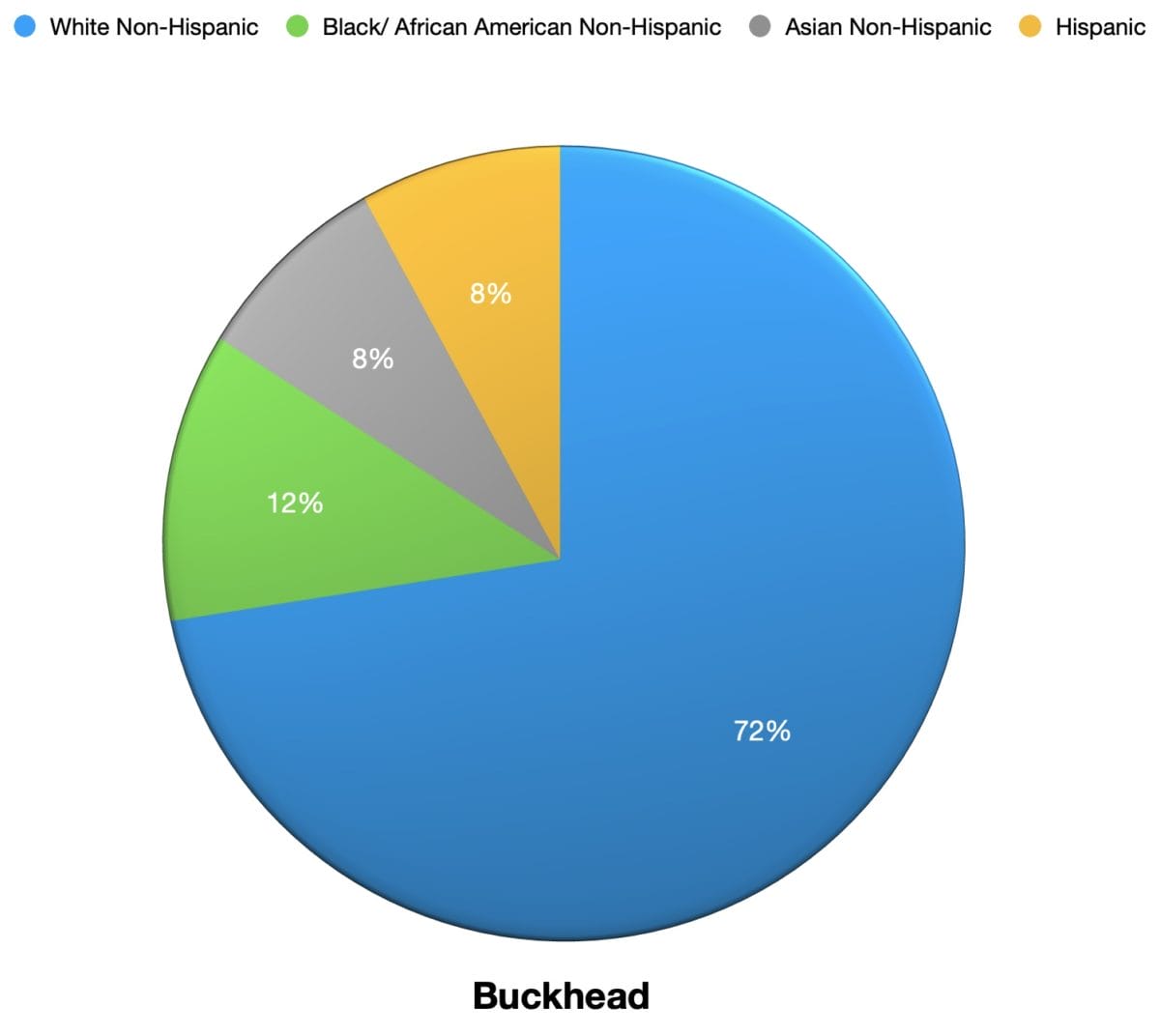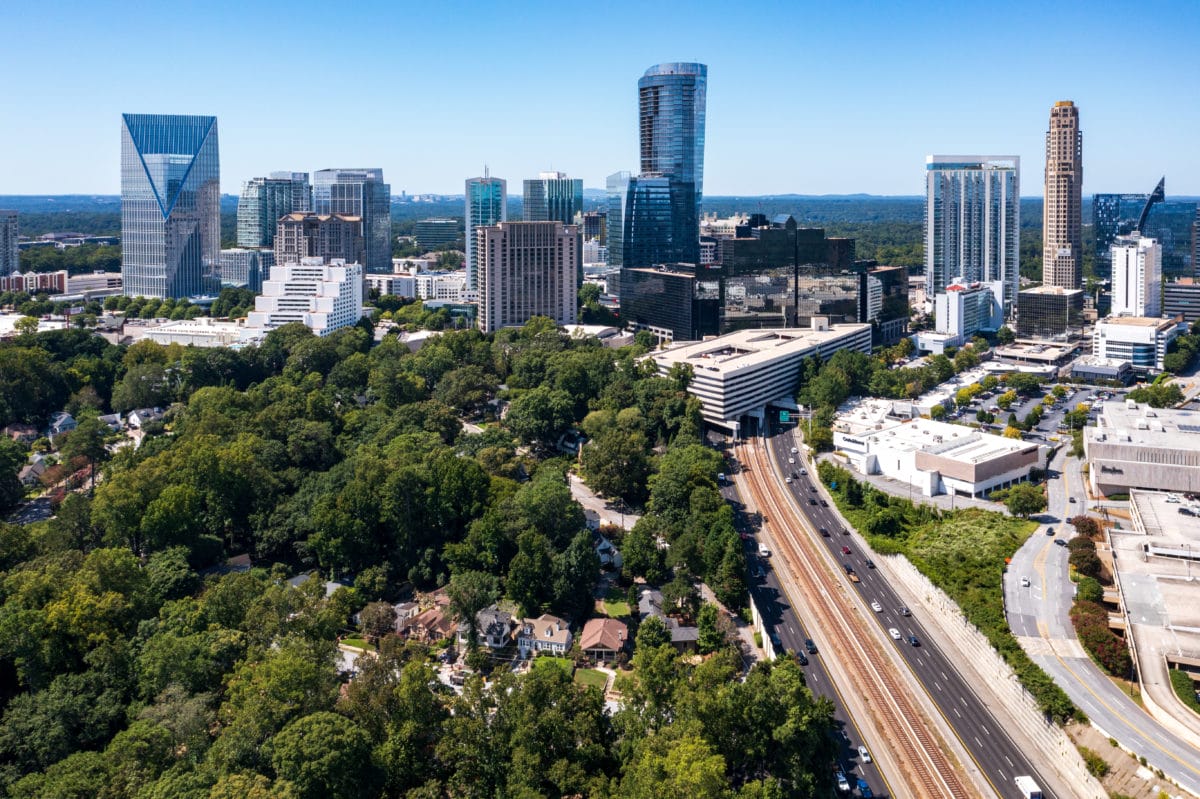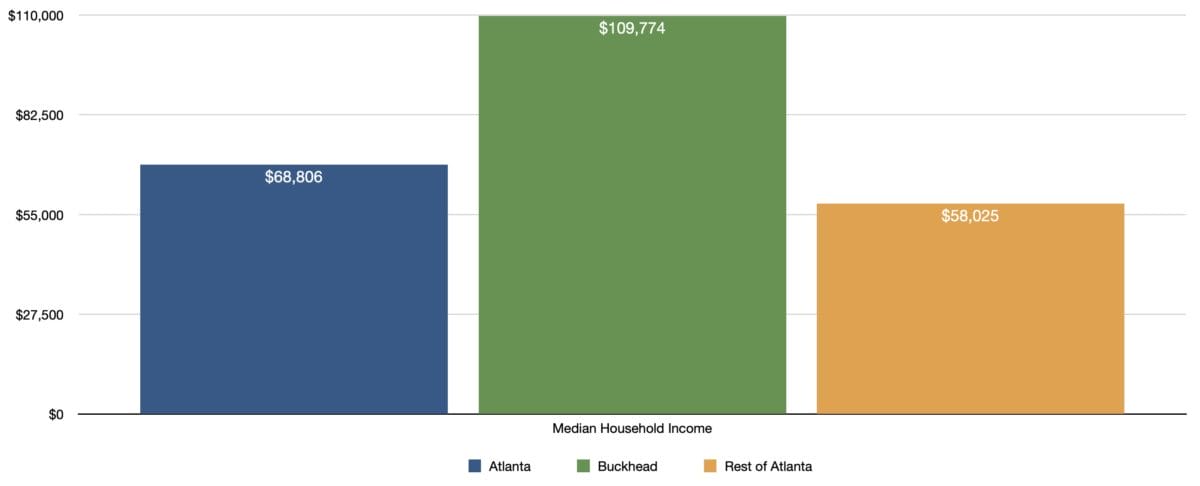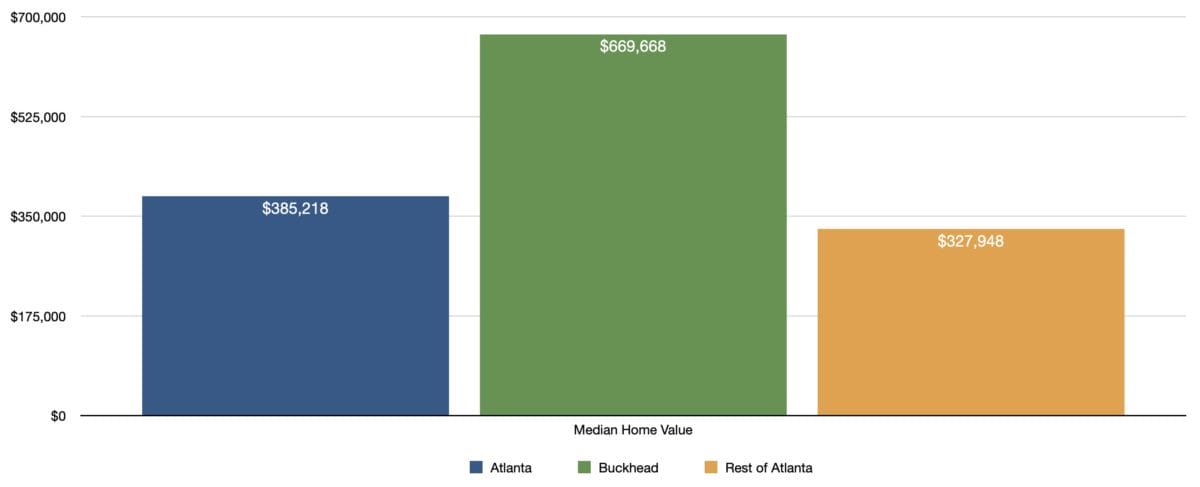Buckhead remains wealthier and is growing faster than the rest of Atlanta, according to 2020 U.S. Census data.
The Atlanta Regional Commission (ARC), a metro area planning agency, provided Buckhead.com with an analysis of the latest Census results for Buckhead and the rest of Atlanta. All Census findings are estimates of the ever-changing population and their lives, but they give a snapshot of where life stands and where it’s heading.
The federal government conducts the Census every 10 years, asking Americans various questions about themselves. The results are supplemented by regular surveys. Due to the COVID-19 pandemic, the results of the 2020 Census took a while to come in. The following are the ARC’s estimates for 2021 statistics.
Population
Buckhead’s estimated population is 108,388 — about one-fifth of the entire city. That’s nearly 25,000 more residents added in the past 10 years. Buckhead’s compound rate of population growth, 2.34%, is well above the rest of Atlanta, which is at 1.38%. And the ARC expects that boom to continue, with Buckhead adding a net of roughly 10,000 more residents over the next four years.
The daytime population — the combination of residents who stay and workers who arrive — is even higher in a heavily commuter-oriented neighborhood. Buckhead’s daytime population is estimated at 164,746, contributing to the overall Atlanta total of 722,656.
Demographics


Buckhead’s population skews a bit older than the city as a whole. The median age is 37.9, while the rest of Atlanta’s is 34. By generation, the biggest single demographic bracket is millennials at 34.1% of the population. That’s followed by Generation X at 19.8% and Baby Boomers at 18.1%.
Buckhead remains heavily majority-White in a city that has a population at least plurality Black, and maybe still a majority, depending on the ebb and flow of estimates. Buckhead’s White non-Hispanic population is 70.65%, compared to 26.94% in the rest of Atlanta. The ARC estimates Atlanta overall as slightly majority Black non-Hispanic at 50.69% of the population, while Buckhead’s Black population is 11.49%.
However, Buckhead is gradually becoming more diverse. The White non-Hispanic population dropped 5% since the last Census. The Black population increased by less than 1%. Residents of Asian background are 7.76% (up 3.19% since the last Census) and Hispanic residents are 7.67% (up very slightly). The population of the rest of Atlanta is about 5% Asian and 4% Hispanic.
Income
Buckhead remains a high-income community. The median household income of $109,774 is far above Atlanta’s overall $68,806; minus Buckhead, the Atlanta median would be $58,025. Buckhead’s per capita income is $85,452, more than twice that in the rest of Atlanta at $40,717.
Buckhead residents have an unemployment rate nearly a third that of Atlanta’s overall figure: 2.4% compared to 6.5%. Minus Buckhead, Atlanta’s unemployment rate would be 7.7%.
Housing
Buckhead remains king of home values and prices. The neighborhood’s median home value of $669,668 far outpaces the overall Atlanta figure of $385,218. Buckhead dominates the supply of homes valued at $2 million or higher at 6.4% of the stock, compared to 0.8% in the rest of Atlanta.
All the same, Buckhead is a majority-renter neighborhood (54.18% of households) in a majority-renter city (58.5%).
Buckhead’s estimated 62,445 housing units represents about 23% of the city’s stock. An estimated 11.53% of those units are vacant, lower than the citywide percentage of 15.17%.
Charts by Rob Knight.







